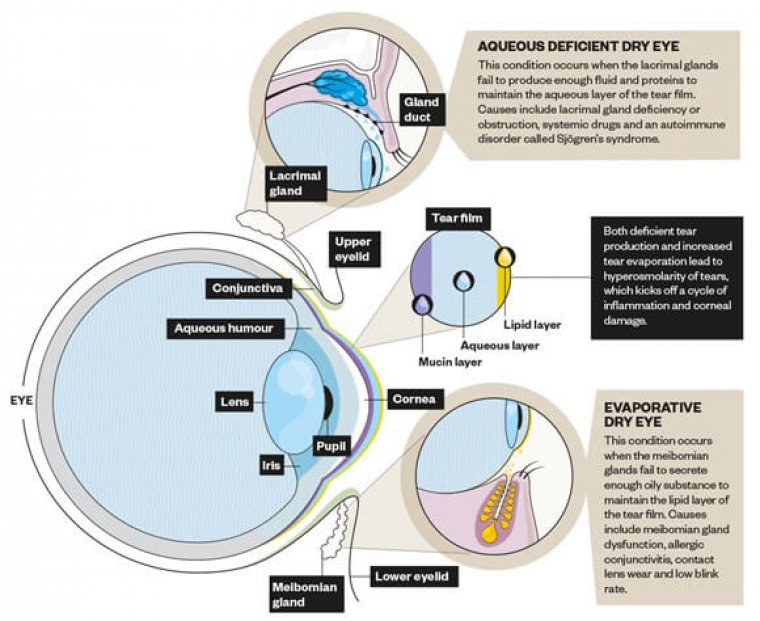
What Is Waardenburg Syndrome? - All You Need to Know
What is Waardenburg Syndrome Eyes?
Waardenburg Syndrome is named after the ophthalmologist and geneticist Petrus Johannes Waardenburg back in 1951. Abnormal and unusual distribution of genetics during the embryogenesis result in depigmentation in some areas like hairs, eyes and skin. Waardenburg syndrome eyes occur with pigmentary abnormalities in the iris. It is a gene mutation that one of the eyes can be blue and the other can be brown.
What Causes Waardenburg Syndrome?
The most common concern about the Waardenburg Syndrome is the causes of this condition. Mainly causes of Waardenburg Syndrome is the mutation and formation of the genes related to pigment producing cells like melanocytes.
The cause is passed from a parent who has the mutated gene. These genes cause the Waardenburg Syndrome; EDN3 (type IV), EDNRB (type IV), MITF (type II), PAX3 (type I and III), SNAI2 (type II), SOX10 (type IV). The cells created by these genes give pigmentation to hair, skin, and eyes. Also these genes help ear functioning and the Waardenburg Syndrome results in hearing loss.
How is Waardenburg Syndrome Inherited?
Since it’s a genetic condition, Waardenburg Syndrome can be inherited from family members and those who pass the gene most probably have the similar depigmentation.
Waardenburg Syndrome Symptoms
The most common symptoms for Waardenburg Syndrome is depigmentation of hair, eyes and skin. Hearing is also diagnosed from moderate to severe level. Different symptoms may occur in different types of this condition. Some common symptoms are;
● Pale blue eyes
● Different coloured eyes
● Two different colors in the same iris
● Patch of a white hair, especially in forehead
● Skin depigmentation
There are four types of Waardenburg Syndrome but the most common types are Type I and Type II. Type I occurs with a broad nasal bridge and wide spaced eyes. Type II occurs with hearing loss. In Type III there are more abnormalities in hearing, skin, arms etc. And in Type IV all the symptoms are seen.
How to Diagnose Waardenburg Syndrome
Waardenburg Syndrome can be diagnosed from the birth till the childhood by the childcare doctor. Also having the family genetic history helps to diagnose the syndrome. The doctor will request a genetic test to confirm the condition together with an eye exam, hearing test and imaging test for ear, hands and arms.
What Are the Tests and Exams?
If the childcare doctor is concerned about the condition, s/he can request a genetic test which is a trusty result for such a diagnosis. Before the birth also the genetic test is advised what to expect from the newborn if one of the parents has a potential genetic problem. Other tests are the eye exam and the hearing test to check for a full examination of the child.
How Common Is Waardenburg Syndrome?
This syndrome can be seen in 1 out of 40.000 people. 2 to 5 percent includes congenital hearing loss. The most commonly seen type of Waardenburg Syndrome is Type I and Type II.
Waardenburg Syndrome Treatment
There is no specific cure for Waardenburg Syndrome however for hearing loss the hearing aids or cochlear implants can be used. Also tracking the child in early age when the hearing loss is diagnosed is beneficial to help language development.
What Are the Possible Complications?
Like every health problem there are some possible complications for Waardenburg Syndrome as well. Firstly the physical appearance is affected by the syndrome so the self esteem issues may occur. Other health complications may appear as constipation that in the severe level the part of bowel may need to be removed. As it is mentioned, hearing loss is the main possible complication. It is so rare however body functioning may be affected as well.
When to See an Ophthalmologist?
If one of the parents has a gene to transfer to the newborn, the child should be tracked with an ophthalmologist for eyesight abnormalities and different coloured situations.
(1).jpg)










